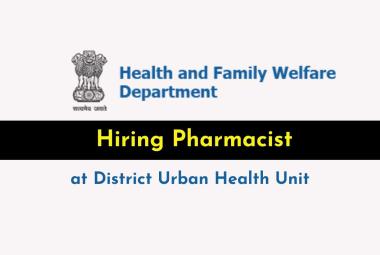{ DOWNLOAD AS PDF }
About Authors
Amoah-Binfoh Kenneth1*, Pradhyuman Singh Lakhawat1, Archana Chandra2
1 SHIATS, Allahabad, UP, India
2 Dept. of Human Resources, SHIATS, Allahabad, UP, India
* geokin08@gmail.com
ABSTRACT
Prognosis the medical outcome of a corrective prediction, physicians become aware of a particular drug through promotional strategies. If all relevant information received is positive, the drug may be tried on few patients’. As a matter of fact if the outcomes of the trials are acceptable physicians will shift and may be more interested to prescribe the drugs consistent. Prescribing drugs is a standard component of most physicians’ practices. It is an important area of practice that requires appropriate knowledge, skill and professional judgment. To improve patient safety when prescribing, these qualities set out expectations for physicians who prescribe drugs. However in connection with the physician’s prescription pattern, Indian pharmaceutical industry is at a turning point. The pharmaceutical firms have to change their strategies for the challenges ahead. Quality systems, innovation, manufacturing and marketing competence are associate factors that affects physicians prescription pattern. The efficacy of drug discovery process has been reported to have suffered a major transformation. New drug discovery has to be strictly adhere to the tight intellectual property rights to ensure effective and efficient, prescriptions and protections. Further clinical and behavioral characteristics of the patient, research and the pressures from drug firms, high curing effect; habitual or non-habitual choice, behavior pattern of patients, peer influence of physicians (community of physicians) and education and advertising are reviewed factors affecting physician’s prescription pattern.
[adsense:336x280:8701650588]
|
PharmaTutor (Print-ISSN: 2394 - 6679; e-ISSN: 2347 - 7881) Volume 4, Issue 4 Received On: 24/11/2015; Accepted On: 05/12/2015; Published On: 01/04/2016 How to cite this article: Kenneth AB, Lakhawat PS, Chandra A; Review study on factors affecting the prescription pattern of Physicians; PharmaTutor; 2016; 4(4); 18-22 |
REFERENCE ID: PHARMATUTOR-ART-2406
CONCEPT OF PHYSICIAN’S PRESCRIPTION PATTERN
Section1 (1), of the Drug and Pharmacies Regulation Act (DPRA), defined drugs as ‘medications’. Section 27 of the Regulated Health Professions Act, 1991, states that, Prescribing Drugs: is a controlled act as set out in the Regulated Health Professions Act, 1991. It stated however, that the controlled act of prescribing is comprised of the generation and authorization of prescriptions. A drug is prescribed when a prescriber provides a direction that authorizes the dispensing of a drug or mixture of drugs. The direction may be communicated verbally, in writing or electronically.
Prescribing drugs is a standard component of most physicians’ practices. It is an important area of practice that requires appropriate knowledge, skill and professional judgment. To improve patient safety when prescribing, this policy sets out expectations for physicians who prescribe drugs. Therefore Physicians’ Prescription Pattern is a set of standard components required from physicians to apply agility, professionalism, duty of care and appropriate prerogative right in positing drugs to patients in very effective manner.
Prescribing is also governed by a complex legislative framework. In addition to the expectations set out in this policy, physicians must be aware of, and comply with, relevant requirements for drugs and prescribing set out in law. This includes, but is not limited to, requirements contained in the Food and Drugs Act (1985), Controlled Drugs and Substances Act (1996), Narcotics Safety and Awareness Act, 2010, and Drug and Pharmacies Regulation Act (1990). [1]
FACTORS AFFECTING THE PHYSICIANS’ PRESCRIPTION PATTERN
According to WHO (2004)[2], it is estimated that approximately 5.3 trillion U.S. dollars were spent on health services, and 25% of this amount was used to pay for medicines (from the WHO National Health Accounts data files for 2006). However, in 2011 [3] WHO reported that, almost half of the world’s population cannot afford these drugs. Data from the WHO indicates that by 2015, over 10 million deaths per year could be avoided by effective health interventions, such as national essential medicine policies.
“Essential medicines”, a concept proposed by WHO in 1977, was defined as drugs with availability, safety, effectiveness and rational use.[4] The WHO guideline on essential medicines has obtained approval from its member states. It is common sense that doctors with prescription eligibility should be responsible for rational drug use. According to Greenhalgh T (1987)[5], an inappropriate prescribing pattern by doctors often encourages inappropriate self-medication by patients because of the asymmetry of medical information. Kun Y et al (2002)[6] stressed that, Doctors’ prescription patterns are not static or standardized but dynamic and individual.
Adebayo ET (2010)[7] also said, studies on medicines are complicated social themes rather than medical themes. However, to increase prescription quality and improve the rationality of drug use, we need to investigate the subjective and objective factors that affect doctors’ prescription patterns. A few researchers have proposed prescription models of prescribing behavior, while others have conducted descriptive studies of physician prescribing behavior.
[adsense:468x15:2204050025]
The following are however, factors affecting physicians prescribing pattern;
Clinical and behavioral characteristics of the patient,
There are many interacting variables that influence a physician’s ultimate selection of a drug. Included among the variables in the prescribing process are the clinical and behavioral characteristics of the patient, the patient’s needs and expectations regarding treatment in the use of medication, the attitudes, expectations, and training of the treating physician, and the organizational and contextual constraints placed upon the doctor-patient relationship by features of the treatment and of the institution.Previous studies have shown that factors such as gender, age, educational status, specialty, work experience, and economic stimulation influenced their prescribing pattern. However, there were limitations in existing studies: all of the existing studies were single factor analyses, which may have ignored the confounding effects on doctors’ prescription patterns.
Several researchers have examined the decision-making process behind physician prescribing and have proposed explanations for it. Knapp and Oeltjan, (1976)[8] in an experimental study of risk-benefit assessment by general practitioners and internists regarding drug selection, posited that the probability of a practitioner prescribing a drug for a particular case was a function of physician expectancy that a beneficial effect on a patient‘s condition would occur if the drug were prescribed, also the amount of beneficial effect to be gained after the prescription. The authors stressed on expectancy of the drug side-effects and the magnitude of these side-effects. However, utilizing this analytic framework, the authors found “disease seriousness” and medical specialty to be highly related to perceived risks in the decision to medicate a patient in four hypothetical cases of hypertension.
Research and the pressures from pharmaceutical organizations
Hemminki (1975)[9] has reported that the major influences on prescribing are research and the pressures from drug firms and proposed a simplified model to describe the decision-making process for prescribing drugs. She observed that: research and drug firms are closely dependent on each other, and may affect physicians through education; scientific journals and advertising according to the doctor’s personal characteristics, his work and his therapeutic opportunities and that patient demands and expectations are controversial and might be largely created by doctors themselves.
High curing effect; habitual or non-habitual choice
Lilja (1976) has examined the product decision making priorities of 118 general practitioners employed by the government. Using the method of regression analysis, he found that “high curing effect” was uniformly the most important consideration in the selection of a drug to treat hypothetical cases of adult diabetes and pneumonia. “Low side-effects” were found to be second in importance in selecting an anti-diabetic medication, while “low cost” was found to be more important in selecting an antibiotic. Based on this study, Lijla proposed that physicians select drugs through a habitual or non-habitual choice. Most of the drug choices a physician makes are habitual and it was suggested that, in explaining how a physician may adopt a new drug, it is important to consider the habitual process. These are the processes of physician’s non-habitual choice, according to Lilja (1976)[10], decision criteria, patient with the disease, procedure for weighting the expectations with the decision criteria, drug decision, external information, dispositions of the drug, and outcome of the treatment and lastly the physician’s knowledge of the drugs.
Behavior pattern of patients
It is obvious that a prescriber’s drug selection decision process, like any consumer purchasing decision, involves the input of many variables. Unlike a consumer, however, the physician’s decision to prescribe involves the input of unique parameters and carries with it a high degree of responsibility. Specifically, what motivates physicians to select a specific drug? Since the late 1940s there have been approximately 100 studies done that examined the influence of specific variables or groups of variables on physicians prescribing behavior. The first review of physician prescriber studies, published in 1974 by Worthen, examined the effect of six variables that influence prescribing (1) patients (2) pharmacist (3) journals (4) advertising (5) drug representatives (6) peer physician prescribing. According to the research Patients were found to have only a slight influence on physician prescribing. The pharmacist was found to have a real influence in some communities but the incidence was low and did not seem to be increasing at an appreciable rate.
Reviews of previous studies; were found to be important as a source of information for the prescriber because they offer the advantages of providing commercial messages and of educating the physician to the latest advances in the art of medicine through scholarly and professional articles. Printed advertising may function more to inform than to convince, but it ranked high in importance in notifying physicians of a new drug product. Drug representatives were found to be of high importance in informing physicians of the availability of the product and other drug data, such as dosage forms and schedules. Peers were found to be a legitimizing channel that influenced prescribing habits by bestowing some kind of approval on the physician’s use of a product.
Peer influence of physicians (community of physicians)
Coleman, Menzel and Katz (1959)[11], in a classic study of peer influence on physician prescribing, determined the social structure of a community of physicians in four Midwestern towns by using social economic techniques. By means of personal interviews they were able to determine which physicians in selecting communities were most often contacted by their colleagues for social purposes, consultation of a formal nature, and ordinary discussion in the course of a normal work day. Having identified the physicians in this fashion, the investigators were able to diagram these relationships. Miller, in the second review of physician prescribing habits performed in 1974, found discussions with peers to be important in drug adoptions in both large and small cities. Hammel (1961)[12] reported the following; physicians use more professional sources, particularly colleagues, when treating difficult conditions in which the effects of drug therapy are less clearly defined prescribers tend to treat wealthier patients with newer and more expensive drugs; in effect, colleagues sharing an office with a physician will use a colleague as a source of information for drugs not presently used by the physician. The attendance at hospital staff meetings seems to influence the adoption of new drugs positively; and formularies probably have a significant effect on prescribing.
Miller (1973)[13] further noted that the drug attributes affecting adoption of a new drug are social reward, consistency of therapeutic response, communicability, pharmaceutical attractiveness, and relative advantage. Negative factors influencing physician prescribing are risk and a high continuing cost of therapy.
However, Miller further explained that, the factors affecting the prescribing of established drugs include initial cost, continuing cost, social reward, time savings, consistency of therapeutic response, clarity of results, pharmaceutical attractiveness, length of drug name, and name and reputation of manufacturer.
Education and advertising
In 1975, Hemminki reported that, education appears to influence the quality of prescribing positively; also the contribution of advertising to prescribing is debatable in that a positive attitude towards advertising can be expected to influence prescribing. However, colleagues do have a positive effect on prescribing, but the influence of a colleague is always secondary to other factors, such as advertising and education; control and regulatory measures may have a positive effect on prescribing, patients and society demands on physicians for drugs may be exaggerated in the case of ethical drug; and lastly Hemminki concluded by saying, no generalizations can be made from studies examining the influence of physician characteristics on prescribing behavior.
High Cost of Drugs
Kshirsagar MJ (1998)[14] laid emphasis on the high cost of inappropriate use of drugs, developing countries faces more problems because of the limited economic resources and lack of organized drug policy. In order to improve the prescription quality and rational prescription pattern promotion there is an inevitable need to investigate the factors that affect doctors' prescription patterns. Studies have shown that there is a correlation between prescription patterns and gender, age, educational status, work experience, economic situation, and physician's specialty.Defining drug prescription and consumption pattern provides advantageous feedback to prescribers in order to improve their prescribing behavior. Prescription analyzing studies help the policymakers to set the priorities to promote the rational use of medicines nationwide.Wang H et al (2013)[15].
Sadeghian et al (2013)[16] in their research said examples of irrational prescription are over- and under-prescribing, polypharmacy, no indicated drug prescription, unreasonable use of expensive medicines and inappropriate use of antibiotics. Pavani V et al (2011)[17] also added that, high cost of treatment, inappropriate prescribing causes ineffective, unsafe treatment, exacerbation or prolongation of illness, distress, and harm to the patient.
CONCLUSION
The physician’s prescription pattern has become one of the essential and important aspect of healthcare industry. There are several factors which directly and indirectly affecting the physician’s prescription pattern like; Clinical and behavioral characteristics of the patient, research and the pressures from drug firms, High curing effect; habitual or non-habitual choice, behavior pattern of patients, Peers influence of physicians (community of physicians), Education and advertising and High Cost of Drugs. Some of minor factors like purchasing power of patients, availability of drugs at local market are also considerable.
REFERENCES
1. Controlled Drugs and Substances Act, S.C. 1996, c. 19 (here in after CDSA). Narcotics Safety and Awareness Act, 2010, S.O. 2010, c. 22 (here in after NSAA).
2.World Health Organization Equitable access to essential medicines: A framework for collective action. Geneva, World Health Organization. 2004.
3. World Health Organization The world medicines situation 2011–medicines prices, availability and affordability. Geneva, World Health Organization; 2011.
4. World Health Organization. 10 facts on essential medicines. Available: http://www.who.int/features/factfiles/essential_medicines/en/index.html. Accessed: 2010 February 12
5. Greenhalgh T; Drug prescriptions and self-medication in India, an exploratory survey; Social Science and Medicine; 1987; 25(3); 307–318
6. Kun Y, Jianwen C, Hua F, Huifen C, Yizhong Z; Analysis of factors affecting Physicians Prescribing conduct; Chin J Hosp Admin; 2002;18(2); 92–94.
7. Adebayo ET, & Hussain N.A.; Pattern of prescription drug use in Nigerian army Hospitals; Annals of African Medicine; 2010; 9(3); 152–187.
8. Knapp D.E. and Oeltjen P.D; Benefits to Risks Ratio in Physician Drug Selection; American Journal of Public Health;1972; 62(10); 1346-1347.
9. Hemminki C; Review of Literature on the Factors Affecting Drug Prescribing; Social Science and Medicine; 1975; 9(2); 111-116
10. Lilja J; How Physicians Choose Their Drugs; Social Science and Medicine; 1976; 10(7-8); 363-365.
11. Coleman J.S., Menzel H., Katz E; Social Process in Physicians adoption of a New Drug; Journal of Chronic Diseases; 1959; 9(1); 1-19.
12. Hammel R.W. et al.; Unfilled Prescriptions in Your Community?; Journal of the American Pharmaceutical Association; 1961; NSI: 155,
13. Miller R.R,. Prescribing Habits of Physicians-A Review of Studies and Prescribing of Drugs, Parts 1-6, Drug Intelligence and Clinical Pharmacy; 1973; 7; 492-557.
14. Kshirsagar MJ, Langade D, Patil S, Patki PS; Prescribing patterns among medical practitioners in Pune, India; Bull World Health Organ; 1998; 76(3); 271-275.
15. Wang H, Li N, Zhu H, Xu S, Lu H, Feng Z; Prescription pattern and its influencing factors in Chinese county hospitals: A retrospective cross-sectional study; PLoS One; 2013; 8(5); e63225
16. Sadeghian GH, Safaeian L, Mahdanian AR, Salami S, Kebriaee-Zadeh. J; Prescribing quality in medical specialists in Isfahan; Iran J Pharm Res; 2013; 12(1); 235-241
17. Pavani V, Mihir YP, Shravani K, Prabhakar RV; Study of Prescribing Pattern for Evaluation of Rational Drug Therapy in Warangal; Indian J Pharm Pract; 2011; 4(4); 77-79.
NOW YOU CAN ALSO PUBLISH YOUR ARTICLE ONLINE.
SUBMIT YOUR ARTICLE/PROJECT AT editor-in-chief@pharmatutor.org
Subscribe to Pharmatutor Alerts by Email
FIND OUT MORE ARTICLES AT OUR DATABASE









